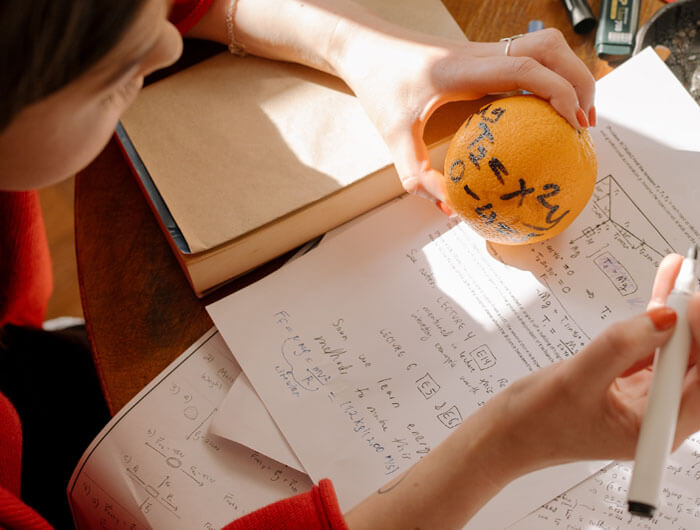Srinivasa Ramanujan’s Impact on Math

Srinivasa Ramanujan was a 19th-century mathematician who made contributions to the theory of numbers, including the pioneering discovery of the properties of the partition function.
Ramanujan was born on December 22, 1887, in Erode, India. He was poor and uneducated, but by age 13, he had mastered trigonometry and began teaching himself calculus. When he was just 13, he published his first paper on a mathematical topic.
Ramanujan’s first paper, “Some properties of Bernoulli’s numbers,” was published in the Journal of the Indian Mathematical Society. Two years after that, in 1913, Ramanujan started correspondence with a famous British mathematician called Godfrey H. Hardy. That year he was offered a special scholarship by the University of Madras and was granted a fellowship by Trinity College, Cambridge. Ramanujan visited England in 1914 and worked with Hardy on some research.
The major achievement in the field of math:
- In 1914, Srinivasa Ramanujan discovered the area formula for computing the number π that is currently used as the basis for the fastest algorithms used to calculate π.
- His K3 surfaces play key roles in string theory and quantum physics, While researchers are using mock modular forms to attempt to unlock the secret of black holes.
Contributions to math
Various math results:
Ramanujan, a mathematician from India, published approximately 3,900 results consisting of equations and identities. These equations and identities form the basis for many algorithms used today in science, technology, and engineering. Most of the pre algebra problems concepts are inspired or derived from his equations. Perhaps most importantly, these algorithms lay the foundation for algebra, which is a topic of great interest to mathematicians around the world. Almost every syllabus around the world adds these formulas in their portions in earlier standards.
Theta function:
He made a number of breakthroughs that led to a vast array of new strategies for solving mathematical problems. These discoveries were so significant that they gave a great deal of momentum to the development of game theory. His work in this field is purely based on intuition and remains unmatched to this day.
He developed the mock theta function, which is a concept in the realm of modular forms in mathematics. Until recently, it was considered an enigma; now, though, it is recognized as a holomorphic part of mass forms.
Helping with Langlands program indirectly:
In 1916, Ramanujan published “On certain infinite series”. In the paper, he researched the properties of Fourier coefficients of modular forms. Although modular forms had not yet been developed as a theory, he came up with three conjectures that guided the invention of that theory. The Langlands program is a series of mathematical conjectures proposed by Robert Langlands in 1970. The goal of this text is to relate two fields of mathematics that seem absolutely different: algebraic number theory and representation theory.
The impact of Ramanujan’s work on modern mathematics is widely viewed as the single most significant project in that field. His seminal paper “On certain arithmetical functions” thus effectively changed the course of mathematics in the XX century.
Ramanujan’s number 1729:
The number 1729 is identified as the Ramanujan number in the math world, named after him. The cube of any number is the result of multiplying that number by itself three times. For example, 1729 is the cube of 10 and 9. The smallest integer that can be expressed as the sum of two cubes in two different ways is 1729. The number 1729 is a natural number following 1728 and preceding 1730.
Ramanujan has made significant contributions to several areas of mathematics, including complex analysis, number theory, infinite series, and continued fractions.
The circle method:
A division of a positive integer n is the number of ways to write n as a sum of positive integers. Ramanujan, along with G. H. Hardy is credited with inventing the circle method, which provided the first accurate approximations of the partition of numbers beyond 200 and helped make significant advances in the 20th century in notoriously difficult problems such as Waring’s conjecture and other additive questions.
A circle method is now a central tool of analytic number theory, and refinements of the circle method form a significant area of current mathematical research.
Partition theory of numbers:
In the context of the Partition Theory of Numbers, Indian mathematician Srinivasa Ramanujan also devised three congruences for the partition function p(n). They are listed below:
- p(5n+4) = 0(mod 5)
- p(7n+4) = 0(mod 7)
- p(11n+6) = 0(mod 11).
The living Legend:
- Ramanujan is the winner of two most prestigious awards :
- 1918, Fellow of the Royal Society
- 1918, Fellow of Trinity College, Cambridge University
To remember and cherish the contributions of this legendary mathematician, the Indian national science academy recognizes people who excel in math and honor them with the “Srinivasa Ramanujan medal” every year.
The lost book
In 2013, a Trinity College theorist Andrew Granville discovered a lost notebook of the Srinivasa in the college library. The contents of this lost notebook were published as a book. People celebrated it by saying “Talent can be found anywhere even in the most unexpected and unforgiving of places. It has to be brought into the light.”
Author’s BIO
Nate Joseland is a freelance writer specializing in business, technology and education. For the past 10 years, he has written for several publications and helped businesses educate their audiences about relevant information about these topics.
Suggested Read: National Mathematics Day






